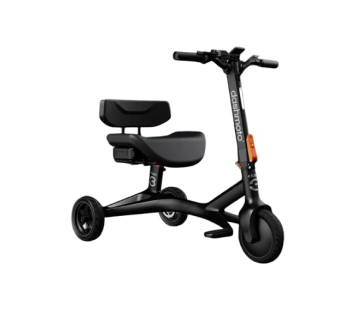Remember that childhood dream of cruising down the highway and then, with the flip of a switch, soaring above traffic? It turns out, that dream might not be so far-fetched after all.
Flying cars, once relegated to the pages of science fiction, are on the cusp of becoming a reality. We'll explore the latest advancements in flying car technology and answer the burning question: when can we expect to see these futuristic vehicles hitting the skies (and maybe even our driveways)?
Table of Contents
Current status of flying cars development and release dates
For generations, flying cars have been a staple of science fiction, a symbol of a futuristic utopia. But are we finally on the verge of turning that dream into reality? The answer is a cautious yes. While we might not be dodging hoverboards on our morning commutes just yet, several companies are making significant strides in developing flying car technology. Let's take a look at some of the frontrunners and explore their projected release dates.
Alef Aeronautics: This California-based company has taken the lead with its Model A flying car. Alef boasts the first electric flying car to receive a Special Airworthiness Certification from the US Federal Aviation Administration (FAA).
This is a crucial step, as it signifies that the Model A meets safety regulations for flying vehicles. Production is slated to begin in late 2025, with deliveries following shortly after. The Model A boasts a driving range of 200 miles and a flying range of 110 miles, making it a viable option for both road and air travel. However, with a price tag of around $300,000, it's likely to be a luxury item in the initial stages.
Other Notable Players: Alef isn't the only company vying for dominance in the flying car market. Several other contenders are making waves in the industry:
- PAL-V Liberty: This Dutch company offers a hybrid flying car that can take off and land vertically, similar to a helicopter. The Liberty is already road-legal in Europe and is expected to fill the FAA-approved flying cars list soon. However, its flying range is currently limited to around 300 miles.
- Kitty Hawk Cora: Backed by Google co-founder Larry Page, Kitty Hawk has developed the Cora, a self-piloted electric flying taxi. This two-seater vehicle is designed for short-distance urban transportation and could revolutionize ride-sharing services. While a release date hasn't been announced, Kitty Hawk is actively conducting test flights and collaborating with regulators.
- Volocopter: This German company is taking a different approach with its Volocopter VoloCity, a multi-rotor electric vertical takeoff and landing (eVTOL) aircraft. Designed for urban air mobility, the VoloCity can carry up to four passengers and is undergoing rigorous testing in various locations.
A definitive release date is yet to be determined, but Volocopter is working closely with governments and aviation authorities to establish regulations for eVTOL vehicles.
Challenges and Considerations: While the development of flying cars is exciting, there are still significant hurdles to overcome before they become commonplace.
- Regulation: Establishing a robust regulatory framework for flying cars is crucial for ensuring safety and managing airspace. This is an ongoing process involving collaboration between aviation authorities, manufacturers, and urban planners.
- Infrastructure: The infrastructure needed to support widespread flying car use is lacking. Landing pads, air traffic control systems, and maintenance facilities would need to be developed and integrated into existing infrastructure.
- Safety Concerns: Public concerns about safety remain a major obstacle. Thorough testing and certification procedures are essential to build trust and address safety anxieties.
The Future of Flight: Despite the challenges, the development of flying cars is accelerating. Advancements in electric propulsion, autonomous flight systems, and materials science are paving the way for a future filled with flying vehicles.
While a definitive timeline is difficult to predict, we can expect to see limited commercial use of flying cars within the next five to ten years. Mass adoption might take longer, but the future of transportation is undoubtedly taking flight.
Factors Influencing Flying Car Release Dates
The highly anticipated flying car release date remains a moving target, influenced by a complex interplay of factors. Here's a closer look at some key influences:
- Regulatory Landscape: Aviation authorities worldwide are grappling with the unique challenges posed by flying cars. Developing a robust regulatory framework that prioritizes safety and manages airspace congestion is crucial.
The pace of regulatory progress will significantly impact release dates. For instance, the FAA certification received by Alef for their Model A removes a major hurdle, potentially expediting their late 2025 release date.
- Technological Advancements: Flying car technology is still evolving. Improvements in areas like electric battery range, autonomous flight systems, and lightweight materials are essential for creating commercially viable flying cars. Breakthroughs in these areas could accelerate release dates, while unforeseen technological hurdles could cause delays.
- Market Demand and Public Perception: Public acceptance plays a vital role. Safety concerns and anxieties about noise pollution need to be addressed. Consumer interest and willingness to adopt this new technology will influence how quickly flying cars reach the market.
Positive public reception towards Alef's Model A pre-orders suggests a growing market, potentially pushing release dates for similar vehicles forward.
- Manufacturer Capabilities: The capabilities of individual companies also play a role. Companies with strong financial backing, experienced engineering teams, and a proven track record in developing and certifying complex vehicles are likely to achieve earlier release dates.
For instance, established players like Boeing or Airbus entering the market could significantly impact timelines.
Flying Car Release Date Speculation:
While it's challenging to pinpoint a definitive date for widespread flying car adoption, here's a speculative look at some specific companies:
- Alef Flying Car Release Date: As mentioned earlier, Alef is leading the charge with a projected late 2025 release date for their Model A, assuming no unforeseen delays.
- Tesla Flying Car Release Date: Despite rumors, Tesla has not officially announced plans for a flying car. Their focus on electric vehicles and autonomous driving technology suggests a potential future foray into the flying car market, but a release date is purely speculative at this point.
- XPeng Flying Car Release Date: Chinese tech company XPeng has unveiled a flying car prototype, the HT Aero. However, concrete information on release dates is scarce. Regulatory hurdles in China could potentially impact their timeline.
The Takeaway:
Flying car release dates depend on a dynamic interplay of factors. While early adopters like Alef are paving the way, widespread adoption likely won't happen overnight.
Technological advancements, regulatory frameworks, and public acceptance will all influence the timeline. Stay tuned, as the future of transportation is taking flight, and the estimated arrival date keeps getting closer.
Current speculations and projections
While a concrete date for everyone to zoom around in flying cars remains elusive, there's a growing buzz around potential release windows. Here's a glimpse into what experts and the market are suggesting:
Expert Opinions and Predictions Regarding Potential Release Dates
Industry insiders offer a range of predictions. Some, like Morgan Stanley, believe limited commercial use of flying cars could occur within the next five years, with mass adoption potentially following in the next decade. Others, like Roland Berger, suggest a more cautious timeline, with widespread adoption taking 15-20 years.
These variations highlight the complexity of factors at play. Robert Cote, a prominent aerospace analyst, emphasizes the role of regulation. He suggests that companies with already certified models, like Alef, might see earlier releases compared to those still navigating the regulatory landscape.
Dr. Missy Cummings, a renowned autonomous systems expert, emphasizes the importance of robust safety systems before widespread adoption. Extensive testing and public trust-building are crucial, potentially extending the timeline.
Consideration of Market Demand and Consumer Readiness
Market demand and consumer readiness are equally important considerations. Companies like Alef are already gauging interest through pre-orders for their Model A. Positive response suggests a growing market, but affordability remains a concern.
With a price tag of $300,000, Alef's offering caters to a niche market initially. As technology matures and production scales, prices are expected to drop, potentially attracting a wider consumer base and accelerating adoption.
Public perception also plays a role. Safety anxieties and concerns about noise pollution need to be addressed through effective communication and responsible urban planning. Public education campaigns and demonstrations of flying car safety features will be crucial in building trust and fostering consumer readiness.
The Takeaway:
While the exact arrival date for flying cars in every driveway remains uncertain, the pieces are falling into place. Regulatory progress, technological advancements, and a growing market fueled by consumer interest are encouraging signs.
Early adopters like Alef are paving the way, and with each hurdle overcome, the estimated arrival date for flying cars becomes increasingly realistic.
We're likely to see limited commercial use within the next decade, with mass adoption following suit as technology matures and consumer acceptance grows.
Conclusion
Remember that childhood dream of cruising down the highway and then, with a flip of a switch, soaring above traffic? Buckle up, because that dream is inching closer to reality. While the exact arrival date for flying cars in every driveway remains uncertain, the future of transportation is undoubtedly taking flight.
The past few years have seen significant strides in flying car technology. Companies like Alef are leading the charge, with their Model A poised for a late 2025 release. Experts predict limited commercial use within the next decade, with wider adoption following as technology matures and public acceptance grows.
Of course, challenges remain. Regulatory frameworks need to be established, infrastructure developed, and safety concerns addressed. But with each hurdle overcome, the dream of flying cars comes a little closer.
So, will we be dodging hoverboards on our morning commutes anytime soon? Maybe not. But the day when flying cars are a commonplace sight in our skies is no longer science fiction. It's a future that's taking shape, and it's an exciting prospect to watch unfold.



